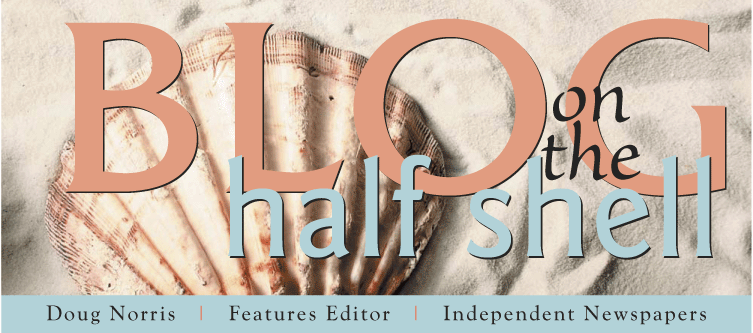Providence is a city of potholes and rabbit holes. The former are rarely fixed, the latter are always on the move, making the Providence underground a notoriously elusive scene. Perhaps that’s because so much of it exists above ground, in artist’s lofts and cold warehouses, abandoned stores and condemned buildings. And that’s just the art scene. Sex and crime also have their own thriving undergrounds, but it’s the artists that have made the city a haven for cheap, radical, do-it-yourself creating, and the clues are everywhere.
They’re stapled to telephone poles and street kiosks, chalked on brick and pavement, plastered to Dumpsters and graffitied on bridges and buildings, appearing one day and vanishing the next, leaving only the trace evidence of stapled fragments and faint chalk to suggest their whereabouts, whenabouts and whatabouts.
The patron saint Andre the Giant still stares down from the odd red octagonal stop sign, warning all passersby to OBEY. That word may have evolved nationally into HOPE or CHANGE and a wrestler may have morphed into a President, but Andre’s stoic mug still shows up now and then as a ghost and an echo of a simpler time, in the same way that pagan symbols often find a niche in the carvings, rituals and texts of modern religious iconography.
Artists, like most folks engaged in a trade, communicate in code. In the past you could find their tracks and ciphers, runes and hieroglyphics at the Price Rite Dumpster, Eastern Butcher Block, Sparkle City, Pink Rabbit, Dirt Palace, Gold Mine, Anarchy Mark’s Basement, Castle Cinema, Columbus Theater, Building 16, Old North Cemetery, Cradle of Filth, Church of the Messiah, Firehouse 19 or Candle Factory. Some no longer exist; others retain their roles as urban tableaux rasa.
More than most cities, Providence is a kind of living canvas. Edgy and dodgy in spots, dotted with entrapments and enchantments, snags and escapes. It is a place where the line separating art from trash is finer than anywhere else, given how much sheer creativity is generated from the recycled detritus of the city's crumbling landscape. A place where garbage dumps are treasure troves. And a place where, if you're a visitor, free parking can be either the holy grail or a false idol.
Earlier this year, I parked on Benefit Street and wandered down to the R.I. State Council on the Arts offices across from the State House. One Andre the Giant stared down at me from a traffic light across from the RISD Museum. Another gazed out from a RISD Rides bus stop. A woman got off a bicycle to post a flyer on a street lamp, a notice of a two-night exhibition of paintings and installations titled “Dirty Laundry & Clean Thoughts,” scheduled for a house on Kinsley Ave. later that weekend. Graffiti on the RISD Museum wall, near the lion mosaics, revealed communication by chalk, mostly anonymous love notes, punctuated by hearts and exclamation points. The space between the concrete steps and the shadowy terrace at the second-floor entrance to the Chace Center was filled with odd noises – typewriter tapping, rain, thunder and lightning, church bells. The work of Wakefield storyteller, educator and artist Marc Levitt, “Audio Winds #1,” a multi-channel audio installation, produced sounds that might have been heard at this precise location during previous centuries. The walk continued, past yellow masking tape on brickwork spelling “YO” and pink chalk scribbles and doodles complaining about finals. I meandered down to a sidewalk with a series of stencils – a tire, a dove and a splayed human body. All the while the city was buzzing was jackhammers and beeping construction trucks. Street corners were wrapped in yellow caution tape. Orange cones and red signs barricaded deep holes in the road, where construction workers wearing hardhats popped in and out, chasing their own white rabbits. And when I returned to my car, still sitting under the watchful eye of Andre, the passenger side window was smashed, my iPod and cell phone were gone, and I was left to ponder a maxim I have long believed: Theft is the only true art.
What is your Rhode Island crime story?
Monday, October 4, 2010
Subscribe to:
Comments (Atom)

